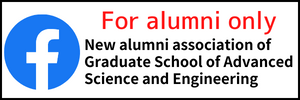Key points of this research results
- Microscopic origin of the activity enhancement of the photocatalytic materials discovered
- First discovery of synergistic enhancement of activity at the boundary of different crystal phases
- Sample evaluation method by multiple measurements in the identical field of view established
Outline
Titanium dioxide (TiO2), which is known to be effective in removing dirt from road signs and building exterior walls with sunlight, has different crystal phases, “anatase” and “rutile”. It has long been a mystery that fine powders with these two phases become highly active when mixed in appropriate proportions. In this study, we carefully prepared a sample with a sharp crystal boundary and observed the steep bending of the electron energy levels at the boundary by using a newly introduced micro-focused X-ray spectroscopy. We found that this characteristic energy band-bending enhances photocatalytic activity.
For the precise evaluation of the activity, it is necessary not only to use an identical sample but also to evaluate its crystal structure and electron energy levels in the same field of view with a high spatial resolution of approximately 100 nanometers (1/10,000 of 1 mm). This result reported by Keita Hiromori (Ph. D student) at Hiroshima University, together with Prof. Ken’ichi Ozawa of the High Energy Accelerator Research Organization (KEK) and Assoc. Prof. Nobuo Nakajima of Hiroshima University. (K, Hiromori et al, 2024, Journal of Physical Chemistry C, 128, 21767)
Currently, powders with different crystal structures are mixed in empirical proportions, and the improvement in activity has reached a ceiling. The preparation of coated films with fine boundaries will lead to the development of photocatalytic materials that require less material and higher efficiency, which is necessary for a sustainable society.


 Home
Home



